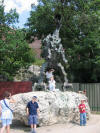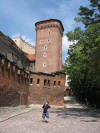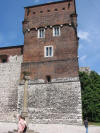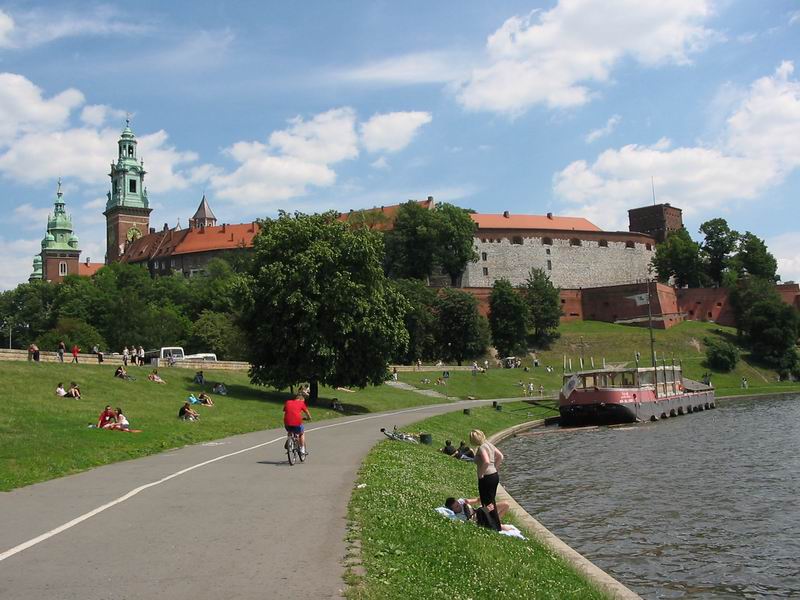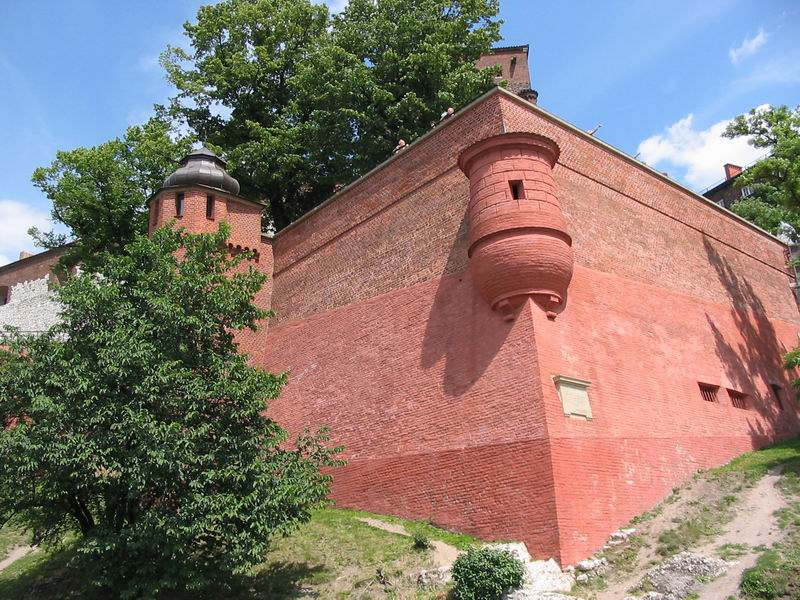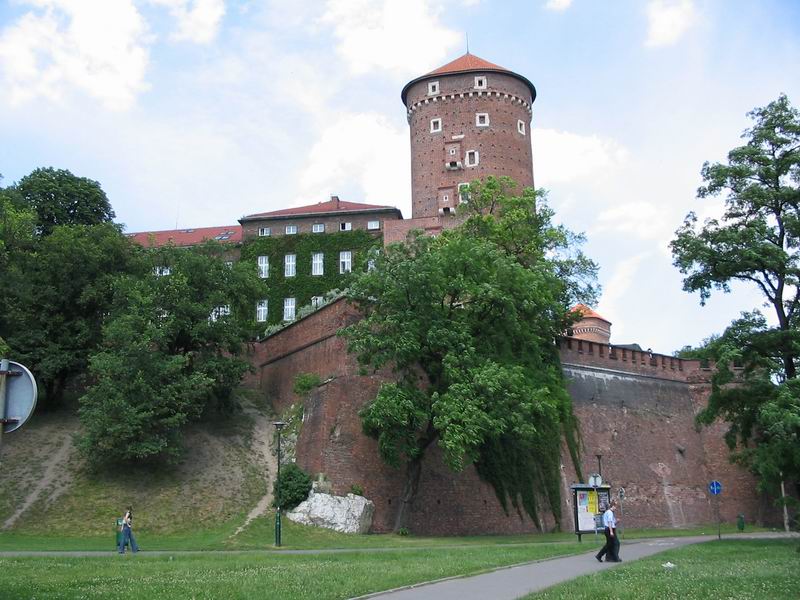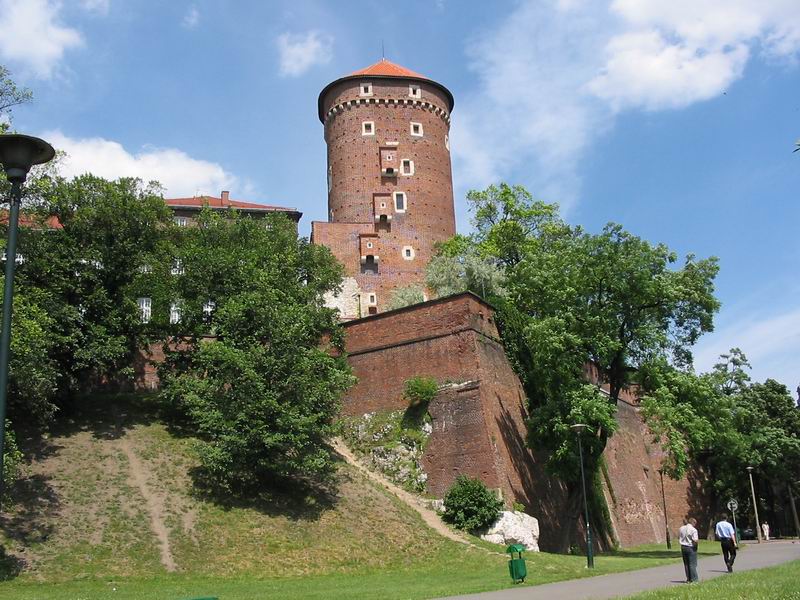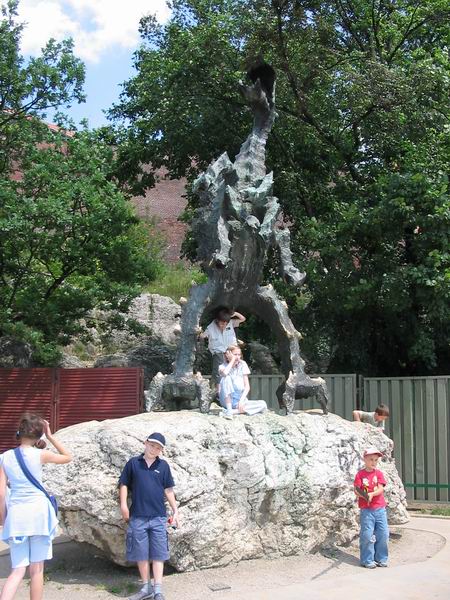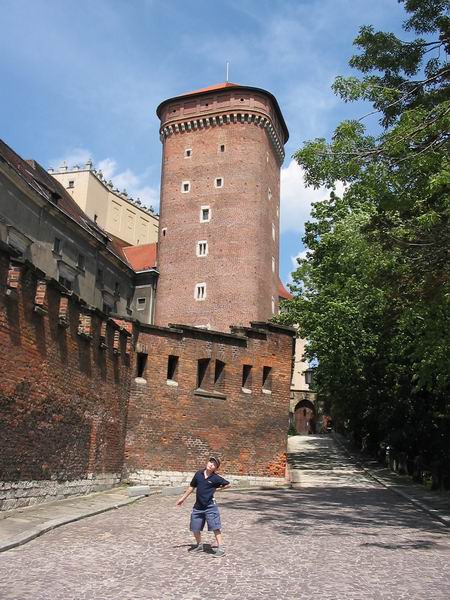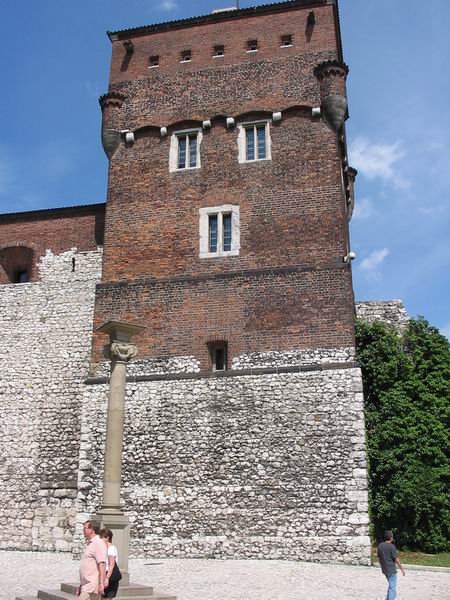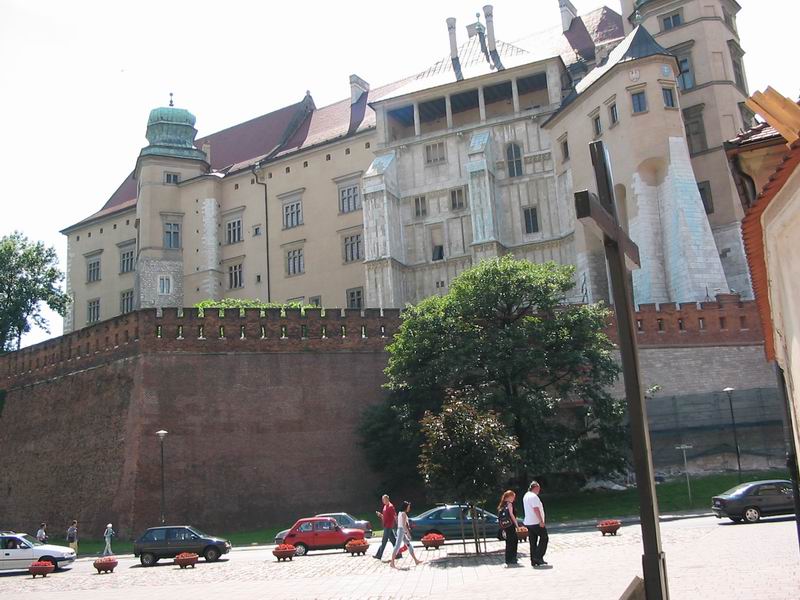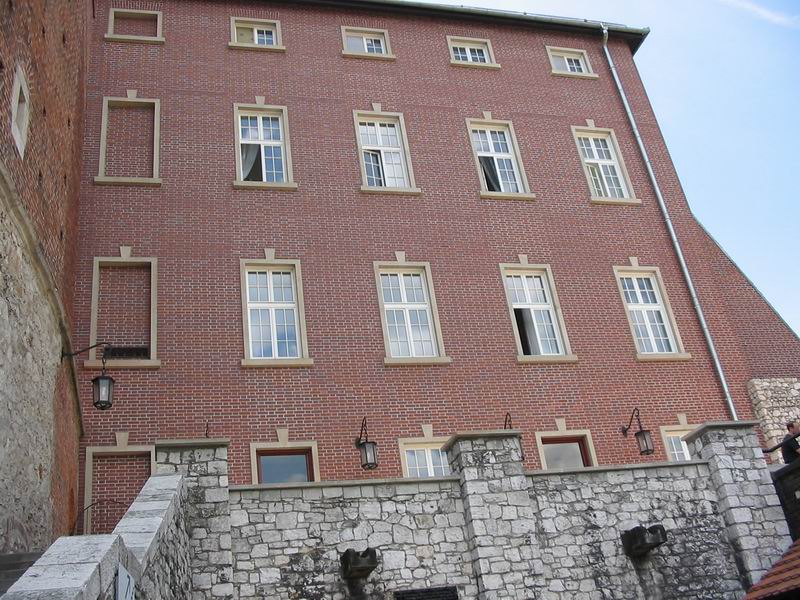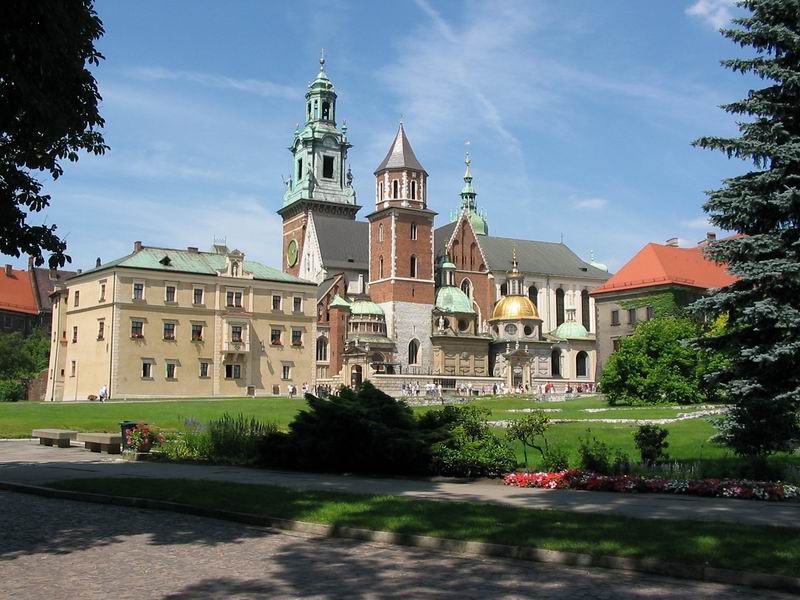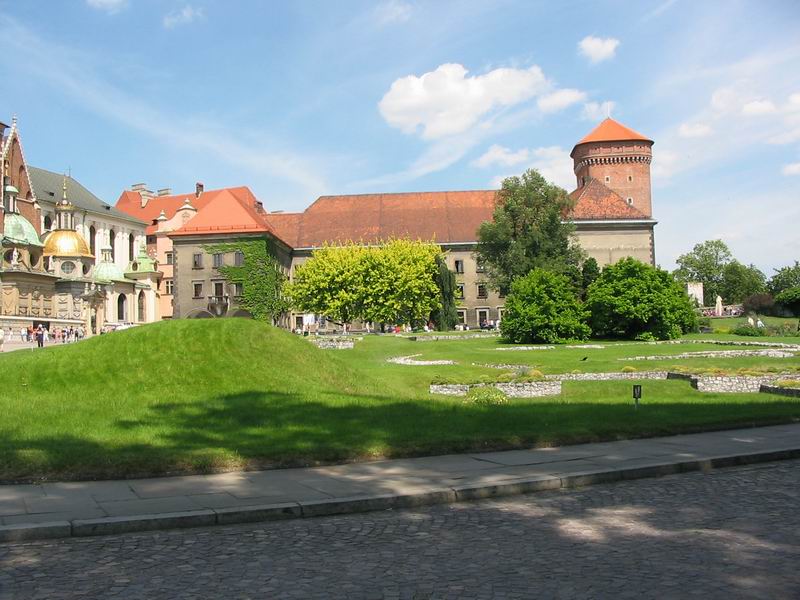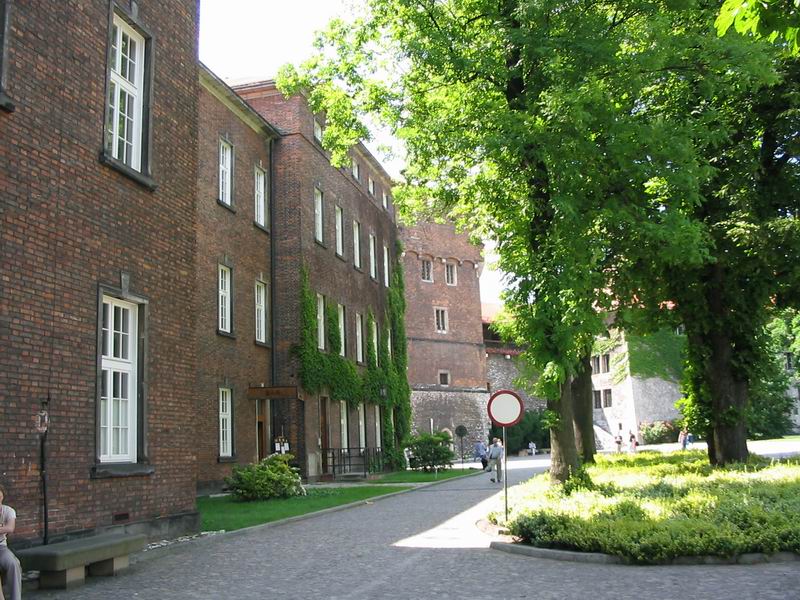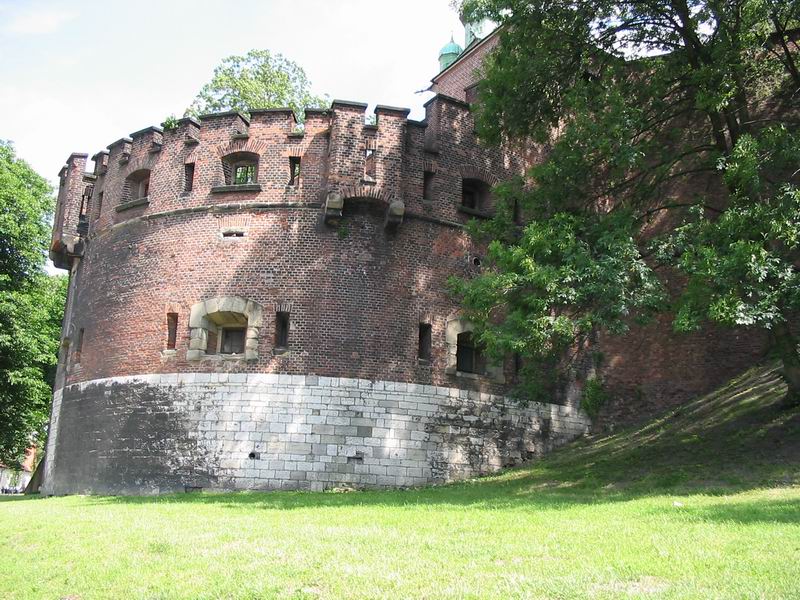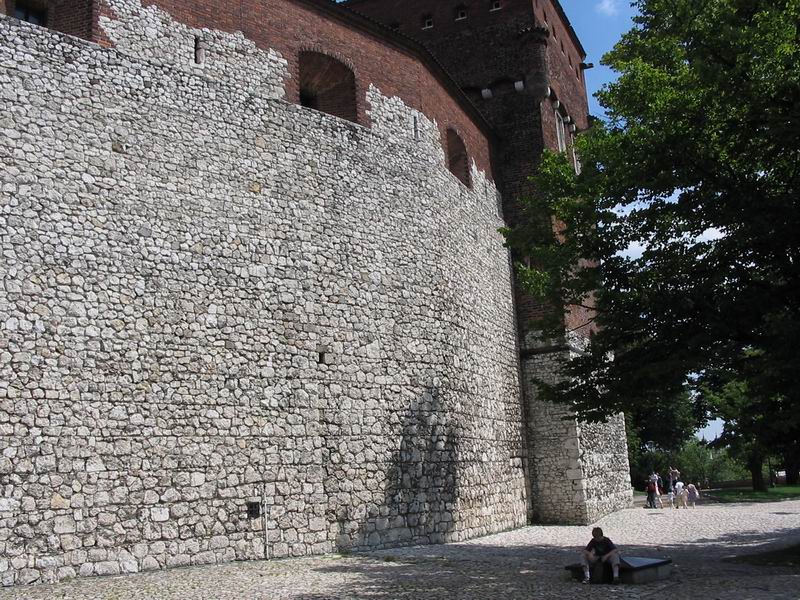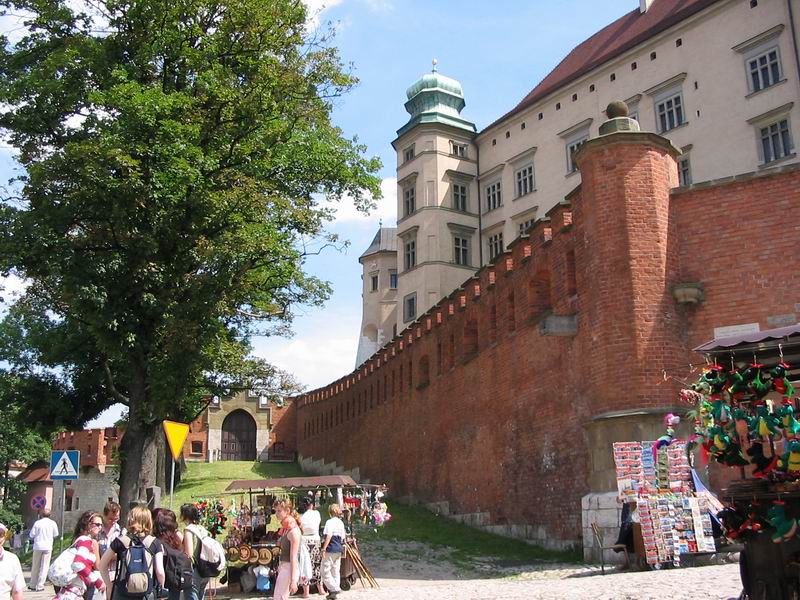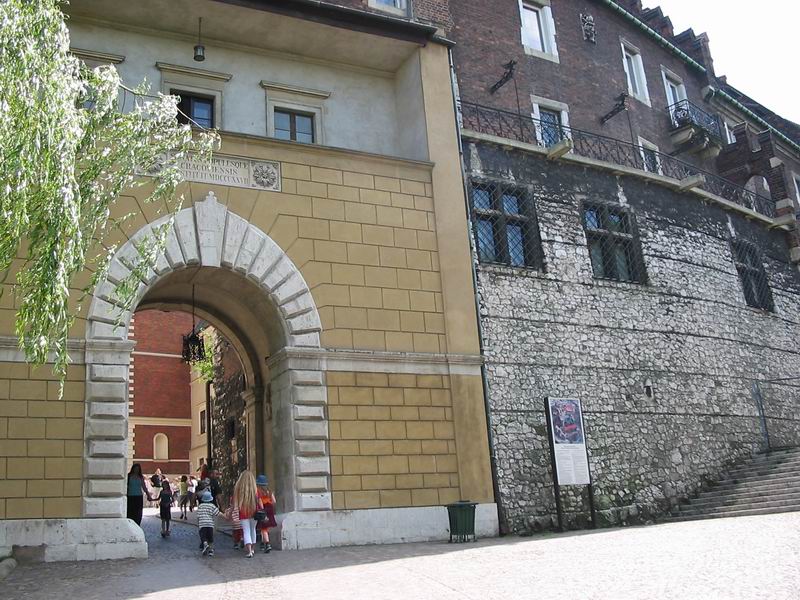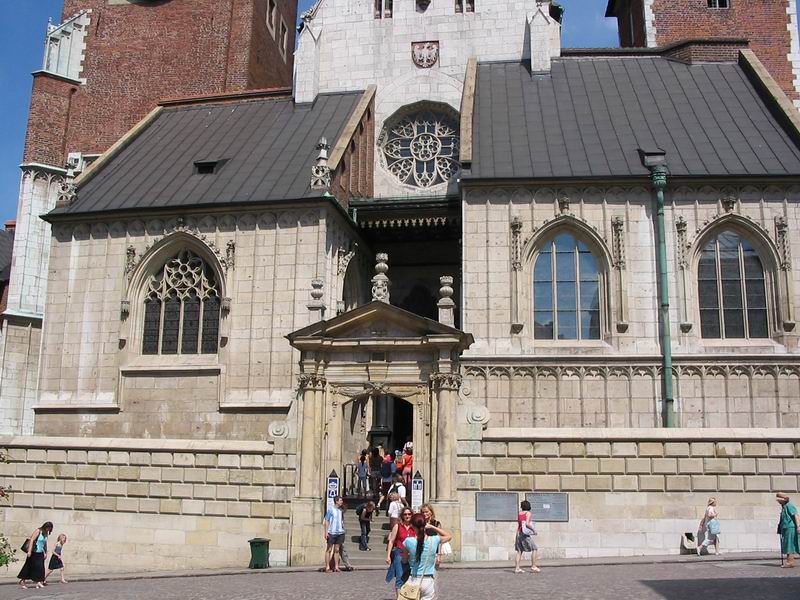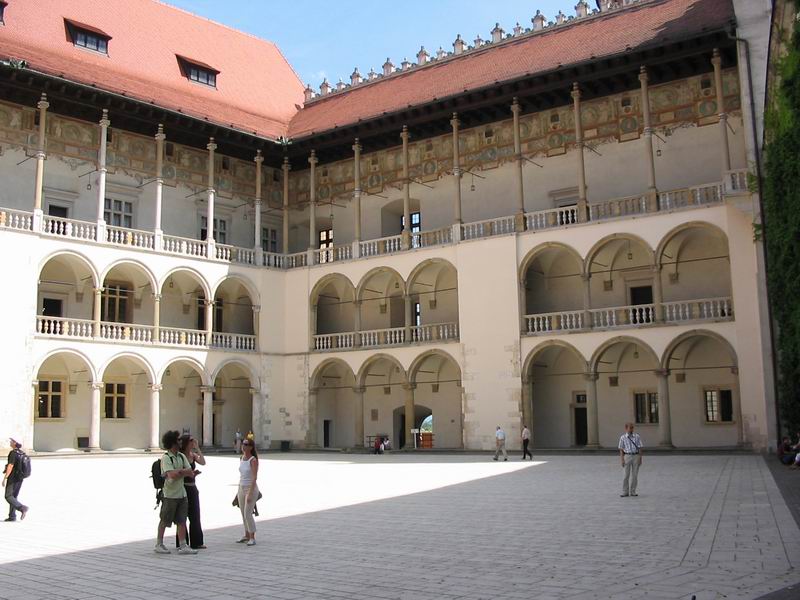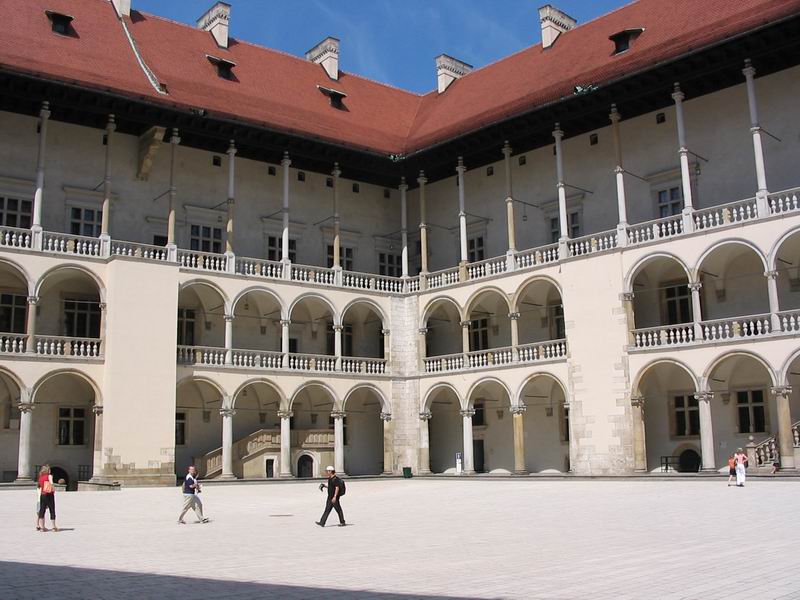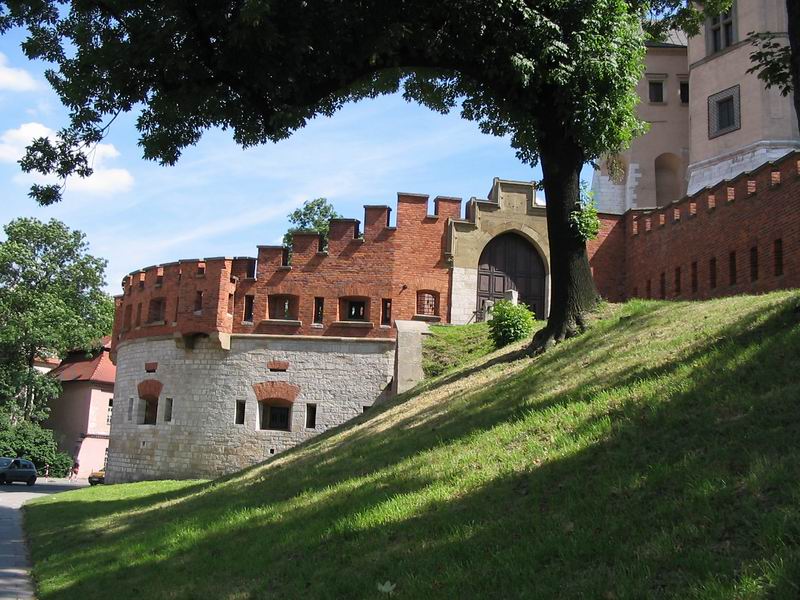Małopolskie
Interesting facts about the history of the castle and town
do X wieku
Our ancestors appreciated the qualities of the limestone hill, which today we know as Wawel, quite early on. Traces of the first settlement date back to 100 thousand years BC. the 8th century Wawel belonged to the Vistula tribe, which the legendary prince Krak and his daughter Wanda originated.
X wiek
In the middle of the 10th century the Wawel Hill was surrounded by a defensive wall by Czech rulers. In 990 Wawel became the residence of the first Polish rulers: Mieszko I, and later Bolesław Chrobry.
965
In 965 Ibrahim ibn Jacob, an Arab traveller, wrote the first description of Krakow in his diary.
1000
Around 1000, Boleslaw the Brave began the construction of a cathedral on Wawel hill, dedicated to St. Wenceslas.
XI wiek
At the dawn of the 11th century, Krakow consisted of three parts: Wawel, Okół and the open settlement. Okół played the role of a suburb, which two roads led to the Wawel hill - one the south and the other the north. Wawel itself occupied an area of about four hectares and was surrounded by earth and wood ramparts.
At that time the first Romanesque religious buildings started to be erected there. In this way Wawel became an important centre of Christianity and power in Poland.
25 lipca 1016
On 25 July 1016, Casimir the Restorer was born in Krakow, who spent most of his childhood here.
1038
In 1038 Krakow was plundered and burned by the Bohemian prince Bretislaus I.
1041
Probably in 1041, thanks to Casimir the Restorer, Krakow became the capital of Poland.
1058-1079
During the reign of Bolesław Szczodry the first Polish mints were established in Kraków and Wrocław, which produced native denars. Numismatists calculate the total number of coins minted during this period at several million. Bullion resources, necessary to maintain continuous production of such numerous issues, came mostly tributes and huge war booty. The ducal denars have on the obverse the inscription BOLEZLAVS, and in the field within a circular line border the head of the ruler can be seen. On the reverse there is a figure of a knight on horseback. The knight holds a spear in his right hand and a triangular shield in his left. Royal denarii, minted after the coronation in 1076, have no inscriptions. On the obverse there is a head crowned with a crown and a hand with a sword, while on the reverse there is a building with three towers, topped with domes, which may represent a specific sacred building or royal palace, but equally well represent a symbolic schematic motif, having no equivalent in reality.
1086
In 1086 King Wladyslaw I of Hungary, trying to install Mieszko, son of Bolesław Szczodry, on the Polish throne, besieged Krakow. After a successful three-month siege, he signed a favourable peace treaty and returned to Poland, ravaging Bohemia on the way.
1090
In the 1070s of the 11th century, St Wenceslas Cathedral burned down.On the surviving foundations, in 1090 Wladyslaw Herman began the construction of a new Romanesque church, called the Hermanov Cathedral.
1093
In 1093, the Hungarian king Ladislaus I was again in Malopolska and once again besieged and captured Krakow. The reasons for this expedition are not fully known.It may have been an expedition in retaliation for the murder of Mieszko Bolesłowawic, or the Hungarian king intervened at the request of Zbigniew, the first-born son of Ladislaus Herman, who had been deprived of the right of succession.
1097
In 1097 Krakow was given to the son of Wladyslaw Herman - Boleslaus the Wrymouthed.
1138
In 1138 the Polish Duke Boleslaw the Wrymouthed established Krakow as the seat of the Senior Duke.
1146
In 1138 the Polish Duke Boleslaw the Wrymouthed established Krakow as the seat of the Senior Duke.
1177
In 1146 princess Agnes - wife of Wladyslaw the Exile - undertook a siege of Krakow.
1191
In 1177, between May and November, Casimir II the Just entered Kraków at the head of an army.The then princeps Mieszko III the Old, seeing this demonstration of power, withdrew to Racibórz.
1206
In 1206 a synod was held in Kraków, organised by archbishop Henryk Kietlicz, exiled Wielkopolska, which was attended among others by the Polish princeps Leszek the White.
sierpie? 1225
In August 1225, during Leszek the White's absence, Krakow was attacked and besieged by Henry the Bearded.
1241
In 1241 Krakow was destroyed by a Tartar force led by Pajdar. that time comes the legend, accoring to which the guard on the tower of St. Mary's Church, was trumpeting the alarm, when suddenly his throat was pierced by a Mongol arrow. Nowadays, to commemorate these events, every hour a bugle call is sounded St. Mary's Church, breaking off in half a tone.
10-15 lipiec 1253
Pomiędzy 10 a 15 lipca 1253 roku w Krakowie przebywał Daniel Halicki. Spotkał się tu z wysłannikiem Innocentego IV, opatem Opizo z Mezano, który przywiózł halickiemu księciu insygnia monarsze i zgodę na koronację królewską.
8 maj 1254
On 8 May 1254, celebrations were held in Kraków to announce the canonisation of Bishop Stanislaus, who had died a martyr's death after having his members cut off on the orders of the Polish king Boleslaus Szczodry. It was a nationwide celebration where the descendants of Boleslaw the Wrymouth had the opportunity to manifest their unity. Accordingly, all the Polish princes took part in the ceremony, with Bolesław the Chaste at the head. Only the Silesian dukes, sons of Henry the Pious, who had tragically died thirteen years earlier, were absent the ceremony. One of the main attractions of this event was the distribution of the bones of St. Stanislaus as relics to various temples throughout the country.
5 czerwiec 1257
Duke Boleslaw the Chaste rebuilt Krakow, granting it a new location privilege on 5 June 1257, based on Western European models and the city rights of Wroclaw. A plan of the town, drawn on the basis of the privilege, has survived to our times.
24 grudzie? 1287
On Christmas Eve 1287 the Tartars besieged Krakow. They did not capture the city, but ravaged its surroundings.
marzec 1289
In March 1289 Krakow was besieged by the army of the Mazovian coalition centred around Boleslaw Siemowitowicz, supported by the troops of Lew Halicki.
Wiosna 1291
In the spring of 1291 King Wenceslas II of Bohemia came to power in Krakow. The reign of this monarch is connected with the ordering of the regional currency. At that time, pennies called small or Polish pennies were introduced, as opposed to the broad Prague pennies. At that time the city of Krakow was provided with better fortifications.
1298
"...During the reign of Wenceslas II new fortified stone gates and walls were erected in place of wooden palisades (Bohemi Cracoviam muraverunt). The Florianska Tower (1298) dates back to this period, and in 1307 the Florianska Gate is already mentioned. The Slawkowska Gate was first mentioned in 1311. The southern border of Krakow was formed by the walls of monasteries: The southern border of Krakow was formed by the walls of Franciscan and Dominican monasteries. Wenceslas did not enclose the town behind the castle with walls and gave the town a promise that the town and the castle would always remain separate.".
Excerpt the book: Edmund Długopolski "WŁADYSŁAW ŁOKIETEK NA TLE SWOICH CZASÓW" p. 29
6 sierpie? 1306
On 6 August 1306 Jan Muskata purchased Miroslaw, called Rožen, 30 lans partly covered with oak and partly arable near Cracow. On the land purchased then, the Krakow suburb called "Biskupie" was later created.
15 sierpie? 1306
On 15 August 1306, after fifteen years of reign of the Přemyslid dynasty, Wladyslaw Lokietek, the representative of the Piast dynasty, took the Cracow throne again.
1306
In 1306 Wladyslaw Lokietek (the Short) granted Krakow a privilege thanks to which the city was given the right to store copper. Transports of Hungarian copper were accepted here. Kraków merchants used their own means to distribute it further. Ships the capital of Małopolska were even seen in Flanders.
20 maj 1307
On 20 May 1307 Wladysław the Short, pronounced the sentence of the court, which took place in the cloisters of the Dominican monastery in Cracow. The defendant was Strasz, son of Dobiesław Końskie, and the wronged party was the Bishop of Cracow, Jan Muskata. The defendant was accused of having wreaked havoc and plundered the bishop's property, and as a result of the arbitration he was found guilty. He was forced to publicly confess to the committed excesses and to promise to pay the bishop a compensation of 250 grzywnas in pure silver or Prague groschen.
14 czerwiec 1308
On 14 June 1308 in Cracow, the Archbishop of Gniezno, Jakub Swinka, pronounced a sentence of suspension of the Bishop of Cracow, Jan Muskata, his pastoral duties. The Bishop of Cracow was accused of lavish feasting and leading a life of immorality. He was also accused of robberies and robberies committed castles that belonged to him, especially Lipowiec, ruled by Gerlach, Jan Muskata's brother-in-law.
1311-1312
In the years 1311-1312 a rebellion of the townspeople against the fiscal oppression of Wladyslaw Lokietek took place in Krakow. The revolt was led by Albert, a Krakow alderman. The German patriciate tried to bring the city under the rule of John of Luxemburg. As this idea failed, Bolko I of Opole took power in Kraków in the spring of 1312. It was only in June 1312 that the armed intervention of Wladyslaw the Short (Władysław Łokietek) restored the old order in the capital of Malopolska.
14 czerwiec 1312
After suppressing a revolt of alderman Albert, on 14 June 1312 Wladyslaw Lokietek appointed a new city council of Krakow.
20 stycznia 1320
On January 20, 1320, the coronation ceremony of Wladyslaw Lokietek took place in Wawel Cathedral. then on, Wawel became the coronation and burial place of Polish kings.
"...The new king also issued a special decree by which he established a new name for Krakow. the day of the coronation it was to be called forever the Royal Capital City of Krakow. Nobody has taken this name away the capital of Malopolska to this day. Unfortunately, the beautiful-sounding title was not followed by any royal privileges for the city and its inhabitants. As was usual with Władysław Łokietek.".
Excerpt the book: Andrzej Zieliński "WŁADYSŁAW ŁOKIETEK" p. 132
8 czerwiec 1329
On 8 June 1329, in Wawel Cathedral, the Bishop of Cracow, Jan Grot, read out a bull by Pope John XXII, which the congregation learned that Emperor Ludwig of Bavaria had been cursed.
2 marzec 1333
On 2 March 1333 Władysław Łokietek died in Kraków.
25 kwiecie? 1333
On April 25, 1333 the coronation of Casimir the Great took place in Cracow.
XIV wiek
Casimir the Great extended the Wawel castle, making it a residence of European importance.Among other things, new towers and a magnificent cathedral were erected at that time.
1335
In 1335 Casimir the Great issued a privilege to build a new independent city next to Krakow - Kazimierz.
lipiec 1351
In July 1351 Louis of Hungary arrived in Krakow to join Casimir the Great in an armed expedition to Principality of Galicia–Volhynia against the Lithuanians.
wrzesie? 1356
In July 1351 Louis of Hungary arrived in Krakow to join Casimir the Great in an armed expedition to Principality of Galicia–Volhynia against the Lithuanians.
21 maja 1363
In September 1356, Henry II the Iron arrived in Cracow to urge Casimir the Great to reconcile with Adelaide of Hesse. His mission was unsuccessful.At the request of his daughter, he took her with him to his homeland.
1364
1364
1366
17 listopad 1370
18 lipiec 1372
7 grudzie? 1376
1378
1378
maj 1383
16 pa?dziernik 1384
18 luty 1386
16 / 17 maj 1389
1391
16 lipiec 1401
29 stycze? 1402
25 luty 1403
1410
lipiec 1410
lipiec 1410
20 stycze? 1416
wiosna 1422
5 marzec 1424
18 czerwiec 1434
25 lipiec 1434
25 lipiec 1434
8 marzec 1440
8 marzec 1440
25 czerwiec 1447
1447-1492
1447-1492
1447-1492
1447-1492
1473
1477-1489
1484
1484
1494
1494
1499
12 grudzień 1501
24 styczeń 1507
24 styczeń 1507
15 kwiecie? 1518
15 kwiecie? 1518
15 kwiecie? 1518
15 kwiecie? 1518
1521
1521
1525
1525
20 luty 1530
20 luty 1530
20 luty 1530
1533
1533
1558
1595
1596
1655
1661
1783
1792
1795
1818
1820
1844
1846
1847
1848
1850
1852
1857
1860
1860
1880
1881
1881
1883
1884
1890
1898
1901
1905
1912
1920
1939 - 1945
6 listopad 1939
18-20 stycze? 1945
1946
Wersja polska
Version française




